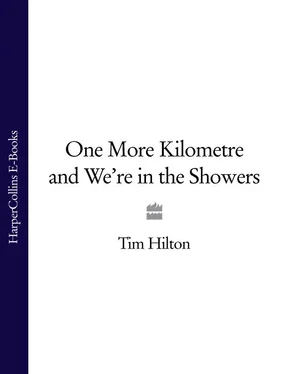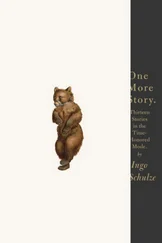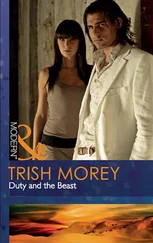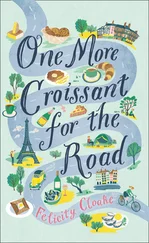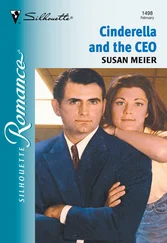As for the spirit of the League – perhaps it depended on your generation. Jimmy Kain sent his angry telegrams to a prime minister who was younger than himself. His objections to dog tracks and speedway sound like those of an old man. Percy Stallard, the original rebel, had begun racing in 1927, and was a family man. The other pioneers from the Little Stretton farmhouse were also grown up. A number of them worked in the Sunbeam body shop, a reserved occupation because they might be needed to build military vehicles. They knew the boredom of wartime. It was folly to deny them a cycle race.
Then comes a later generation, typified by another Wolverhampton man. In 1945 Bob Thom came back from war service, signed up with the BLRC and rode the Brighton – Glasgow. He was BLRC champion in 1948 and in that year became a small-time professional for Viking Cycles. Team mechanic for the BLRC team in the 1952 Warsaw – Berlin – Prague, he was also mechanic for the British team in the 1955 Tour de France and managed British teams abroad until the mid-1970s. He and his wife Jeannie still ride their bikes, always in the colours of the Wolverhampton Wheelers.
The third generation, younger than Bob Thom by a decade or more, were those racing men who joined cycling in the early 1950s, at the end of austerity and rationing but before mass motoring had begun. These adherents to the BLRC displayed a new working-class sense of modishness and were sometimes said to be the Teddy Boys of sport. I never saw any cycling Teds, but there was certainly a smart and disobedient look. In the 1950s you could identify a Leaguer by his roadman’s position on the bike, his continental equipment, his preference for derailleur gears, Campag if possible, a flashy Italian road jersey and dark glasses. Unlike more traditional cyclists, a Leaguer was likely to be a (modern) jazz fan, would frequent coffee bars, might go out with a girl from the local art school, was a snappy dresser on and off the bike and had no respect for the culture of touring and youth hostelling.
Something else made a difference between the Leaguers and traditional cyclists. They were so good! They trained harder, rode harder, had high ambitions and studied the sport with Europe in mind. The League was inspired by France and Italy, countries with a mass following for the bike game. Leaguers always wanted to ride on equal terms with the continentals, and soon they did.
The BLRC alone introduced road racing to Britain, gave us stage races on the continental pattern and looked for sponsorship and publicity from newspapers and other interested parties. The first Tour of Britain was held in 1951, under the banner of the Daily Express and with much help from Butlin’s holiday camps (which often gave hospitality and shelter to the caravan of a British stage race). Quite soon, however, the Daily Express pulled out of cycle sport, fed up with the feuds between the BLRC and the NCU. The League’s Dave Orford approached the Milk Marketing Board, and the Tour of Britain was reborn with a different name, by which it is still fondly remembered: ‘the Milk Race’.
The Tour of Britain and The Milk Race invited foreign competitors, and British teams went abroad. There was friendliness between the League and the sporting bosses of the Warsaw Pact countries, probably because the communist nation-states saw no need to obey the dictates of the Union cycliste internationale , which was always suspicious of the BLRC. So a major triumph was Ian Steel’s victory in the tough 1952 Warsaw – Berlin – Prague, the ‘Peace Race’, in which Leaguers from Great Britain also won the team prize.
The BLRC also developed a British professional or semi-professional class. Apart from Ovaltine and BSA, the sponsors of the new professionals were usually small bike firms – i.e. shops that also made frames – or importers of Italian accessories. I like to remember the pioneering racing men who wore the colours of such marques and lament that, today, we don’t have the events that made them famous. Here are some of them, in no particular order – for who can impose order on the League?
Dave Orford (Belper), Ovaltine/Langsett Cycles, Ist BLRC Junior Road Race Championship, 1948, Ist Circuit des Grimpeurs, 1955; Bev Wood (Preston), Viking Cycles, Ist London – Dover, 1950; Ken Russell (Bradford), Ellis Briggs Cycles, Ist Tour of Britain, 1952; Peter Proctor (Skipton), BSA Cycles, King of the Mountains, Tour of Britain, 1952; Alec Taylor (Marlborough), Gnutti Accessories, 2nd Tour of Britain, 1951; Les Wade (London), Frejus Cycles, Ist Nottingham – Butlin’s Holiday Camp, Skegness, 1950; John Perks (Birmingham), Falcon Cycles, Ist Tour of Wessex three-day, 1954; John Bennett (Derby), Mottram Cycles, Ist Battle of Britain Road Race, 1954, Ist Birmingham Road Race, 1959; Phil Ingram (London), Dayton Cycles, 2nd London BLRC Time Trial Championship, 1944.
All the British riders who were good enough to ride the Tour de France in the years after 1955 came from a BLRC background. Let’s remember one person who didn’t ride the Tour but was present at its worst moment, Tommy Simpson’s death in 1967. This was the British team’s mechanic, Harry Hall (Manchester), Harry Hall Cycles, Ist Three Shires Road Race, 1952, Veteran World Road Champion, 1989. He tended to Simpson on the Ventoux mountain before the stricken rider died and heard his friend’s last words. ‘The straps, Harry! The straps!’
Just a boy and a teenager in the 1950s, I had no part to play in the BLRC disputes, though it was easy to know which side to join. Up the League! Veteran cyclists still greet each other with the slogan and use other phrases we learnt many years ago. We shout ‘Ally ally ally’ as encouragement in races – and not everyone realises that this old League chant is an innocent corruption of the French Allez!
I am a child of the League and of communism, a powerful and ineradicable mixture. The League formed my adolescence, while I had been drinking the red milk of communism since birth. My real first name is Timoshenko, after the renowned marshal of the Red Army. I doubt whether my parents’ politics inclined me towards the League, which attracted everyone who wished to flex the muscles of youth. But its internationalism and pariah reputation suited a person with my background.
I first visited France in 1948, when my communist father drove his small family to the Midi in my maternal grandfather’s Bentley. Little boy though I was, I could master books like a journalist. A box at the back of the car held my reading matter. There were books about Robin Hood, Geoffrey Trease’s Bows against the Barons (1934) and such Soviet works as Timur and his Comrades , a children’s story about a young member of the Komsomol and his work in building a new socialist state (a book which I secretly dismissed in about twenty minutes). On the journey I was content to look at France through the windows of the Bentley: long avenues of trees, rivers, castles, vineyards, towns which seemed partly to have fallen down. My diary is in existence, but memory serves better to recall the wine I tasted, the strange, wonderful food eaten out of doors at twilight. The weather was hot. What was that noise of crickets? Then it became cold and windy, and my father drove to high Alpine villages whose people were goitred. Their swollen faces were brown with filth, they dressed in rags and lived in taudis , hovels, with their animals.
A few years later, when I became a cyclist, thoughts of that 1948 expedition increased my wish to understand the Tour de France. Cycling is not merely about physical pleasure. It is also about knowledge and living memory: the memories we can share with those who are still alive.
The Tour is now a hundred years old. Every year it is an epic; and every year there are stages of the race that are epics in themselves, containing dozens of human stories of heroism, toil and suffering. The Tour is both theatre and poetry. It reflects all the history of France, and indeed Europe, in the last century. The ideal historian of the Tour would also know about social geography, international relations and folk religion; together with the nature of immigration, the use of drugs, television, money, political power and advertising. This historian should also be a linguist, French, and a racing cyclist with a feeling for the tragedy of the twentieth century.
Читать дальше
